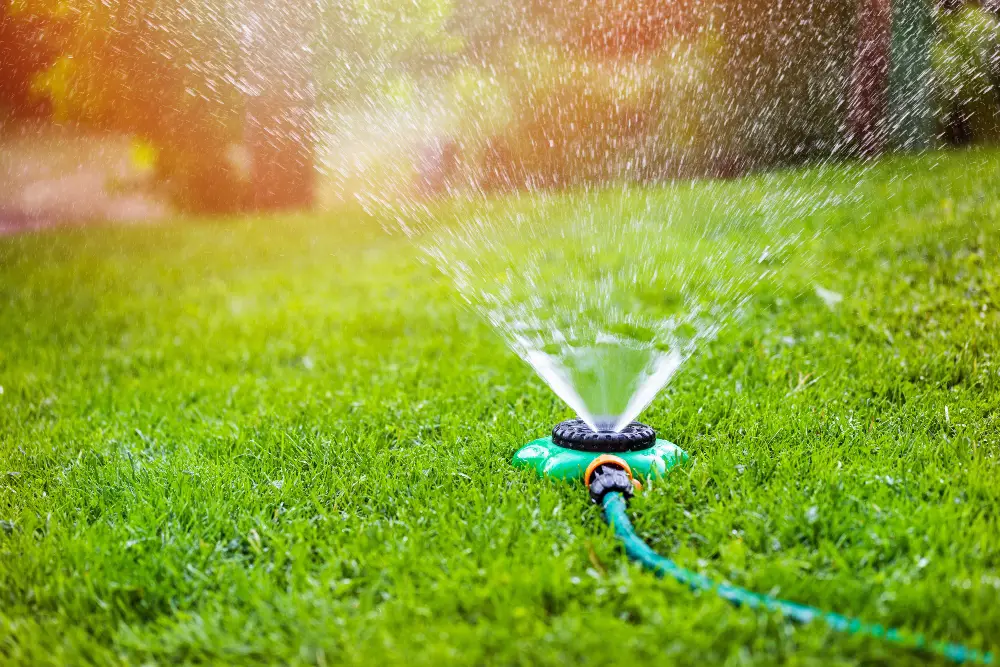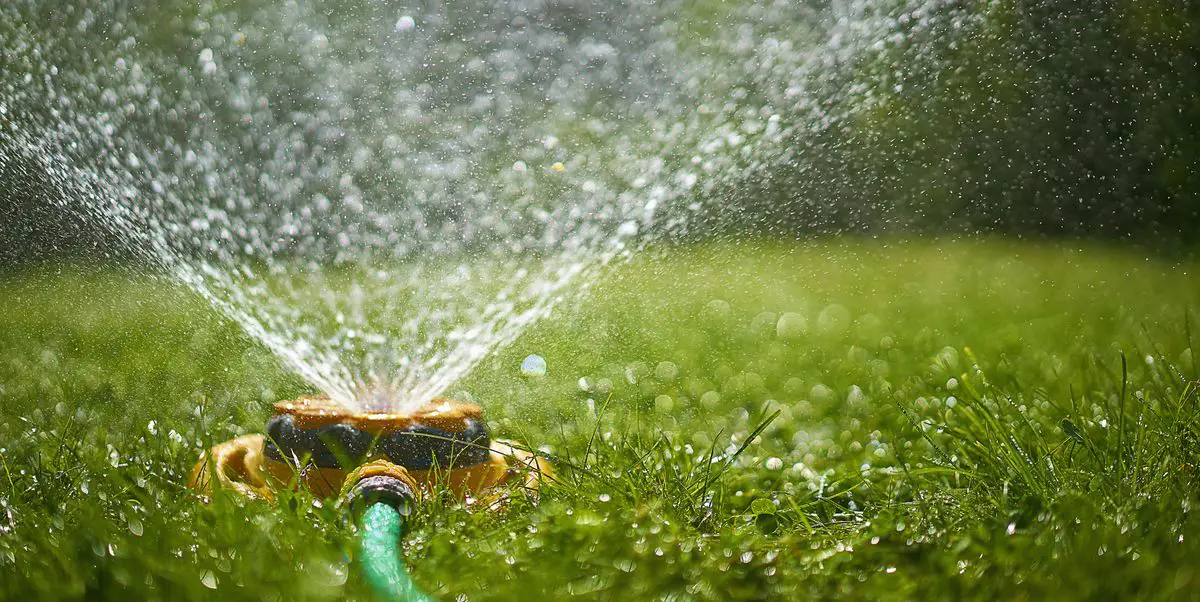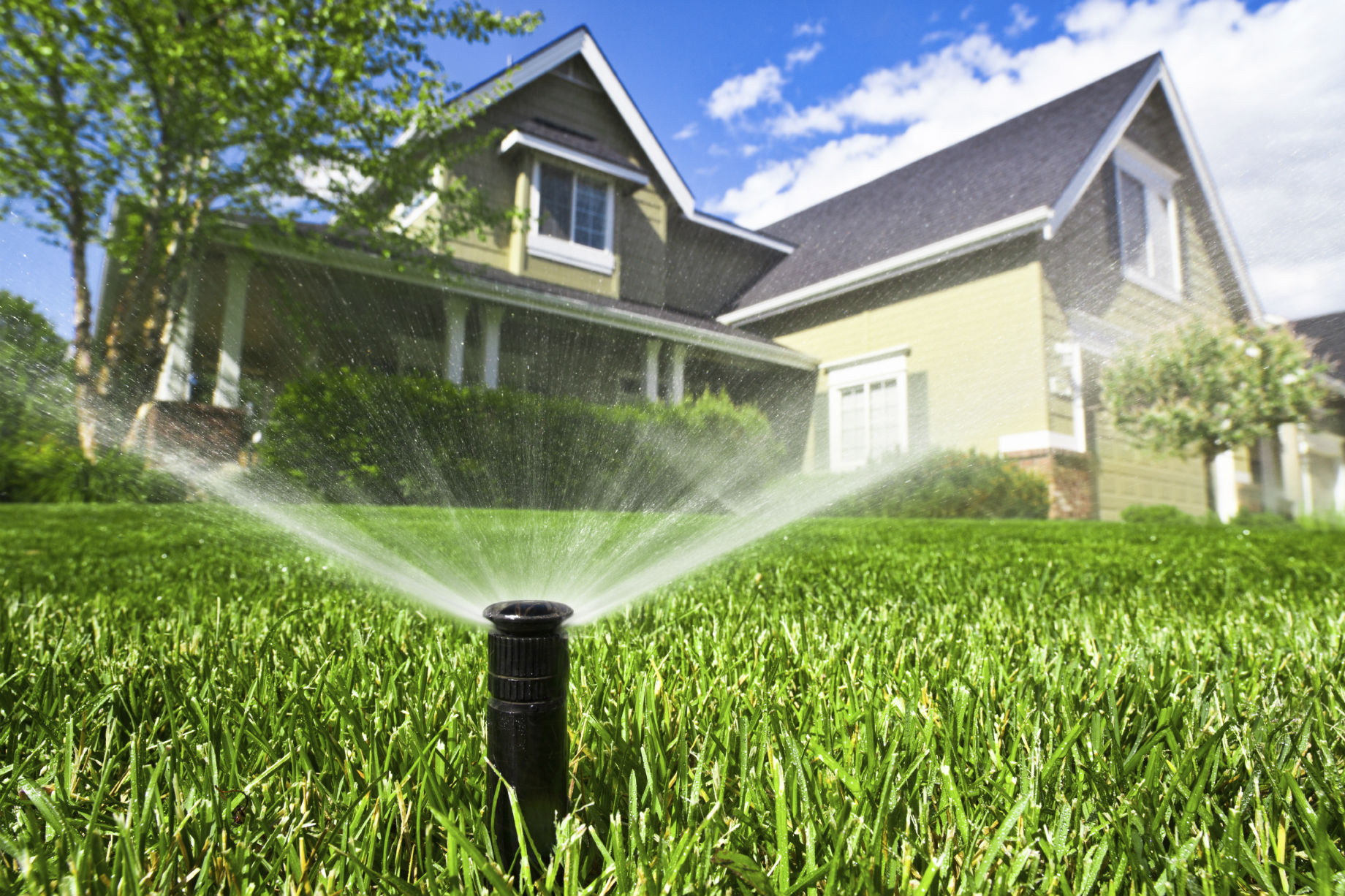Should You Water Your Lawn If So How Often
There are many different things you can do to get your lawn looking its best, from weed and feed treatments, regular mowing and even talking to your grass will help it to grow. No really talking helps your plants grow.
But the one key ingredient for your lawn or any plant is WATER. Without it plants will not survive, and even your very resilient little grass blades can die off if left too long without a good drink.
But what if its rained a lot or if there is rain due? Can you over water your grass and whats the best way to do it?
How Else Can Good Watering Practices Help My Lawn
In addition to promoting a healthy lawn, good watering practices can also benefit your wallet and the environment.
If youre not watering your lawn at the right time of day or for the right amount of time, youre likely using more water than necessary. This will raise your monthly water bill and strain local water resources.
Conversely, if youre watering your lawn correctly, you can be sure that the water is being used efficiently and not going to waste. This helps to conserve water and save you money in the long run.
Its also worth noting that youll need to adjust it seasonally if you have an automatic sprinkler system. The amount of water your lawn needs will change depending on the time of year and the weather conditions. By adjusting your system accordingly, you can ensure that your lawn is getting the right amount of water year-round.
Expert Advice On How To Make Your Grass Greener
We asked David Hedges Gower, chairman of the Lawn Association, for his top tips on how to make your grass grow greener again, particularly in summer heatwaves. David established his successful lawn care company in 2004 and has since taken the topic of lawn care to a new level, creating unprecedented access to modern lawn care expertise.
Also Check: How Much Does It Cost To Get Lawn Mowed
Why Should You Lay The Lawn Irrigation Underground
For optimal watering the lawn irrigation should be installed underground. This is because it uses less water than surface irrigation, making it more efficient and environmentally friendly. In addition, underground irrigation reduces evaporation and runoff, so there is more water available for your plants. It also allows you to control the amount of water your plants receive, ensuring they get the moisture they need without being over-watered. Overall, underground lawn irrigation is the best way to ensure your plants stay healthy and reduce water waste.
How Often To Water Your Lawn: 20 Minutes 2

Image by Geroge Tsartsianidis / Canva Photos
Rather than daily, its best to water thoroughly for about 20 minutes, two to three times a week. You want your lawn to get about an inch of each time you water. If your grass is showing any of the following signs, you may not be watering enough:
- It doesnt spring back quickly after you step on it.
- The blades of grass are starting to curl up and shrivel.
Last, and perhaps the most obvious sign you need to water, is if your lawn is starting to lose its lovely green color and turn brown. That means its stressed and clearly not getting enough water. But when is enough water too much water?
In our next section, well provide some handy tips to tell if youve overwatered or if the amount of water youve been putting on your lawn is just right.
Recommended Reading: What Is The Cheapest Lawn Fertilizer
How Do I Know When My Lawn Is Sufficiently Watered
The most important area of the soil and one that must remain wet at all times is the first 3 inches. This is the area where the grass plants roots grow. It is difficult to calculate how much watering is required to maintain a sufficient level of water in this area, so visually checking is the best way. You can dig a small hole and check how far down the soil is wet.
In most cases, following our watering guide above will give your lawn a sufficient amount of water, assuming you water at night and that the surface of your lawn has no more than an average amount of thatch.
General Tips For Watering Outdoor Plants
During dry seasons, watering is necessary to maintain healthy plants. Water is more important for new plantings than for established ones.
In trying to conserve water and to realize the greatest benefit from water used, it is wise to set up a regularly scheduled program.
- Do not try to water all planted areas at each watering.
- Section off your areas, and concentrate on these areas individually for maximum benefit.
- Saturate each area, and then allow to dry out before watering again.
- Plan to use mulch around all planted areas to reduce water loss.
- Do not allow plants to wilt before beginning a watering program.
- Overwatering can be more harmful to plants than underwatering. Roots need air as well as water. Do not keep soil saturated with water continuously.
You May Like: How To Properly Dethatch Your Lawn
Failing To Adjust For Rainfall
If you live in an area that receives a lot of rainfall, you may not need to water your lawn as often. Pay attention to the weather forecast and make adjustments to your watering schedule based on the amount of rainfall expected.
Overwatering is just as harmful to your lawn as not watering it enough. Too much water can kill your grass and lead to fungal growth.
When Is The Best Time To Water My Lawn
If the amount of water we use to water our lawn should be monitored, the time for when you water your lawn is equally as important. The best time of day to water is early in the morning from around 6 am to 10 am. This allows the soil plenty of time to dry before nighttime. Wet soil at night is not a good idea because it makes the lawn susceptible to fungus or other disease problems. Watering in the morning, on the other hand, is ideal because it keeps evaporation to a minimum due to the cooler temperature. It also prepares the soil for the hotter part of the day by keeping the turf cool so it doesnt cause stress on the grass. If the watering schedule in the morning is hard to achieve, however, the next best time would be late in the afternoon.
Recommended Reading: What Does Trugreen Lawn Care Do
Adjust Your Lawn Watering Schedule
Timing is important when watering your lawn. The best time to water your lawn is early in the morning really early! Between 4 AM and 7 AM is optimal. If you water during the day, sun and heat will evaporate 20-25% of the water, leaving much less water for your grass. To help with this watering schedule, use a timer on a sprinkler or irrigation system. Its much better than waking up at two in the morning!
You may notice that some people water their lawn every day, sometimes for as little as 10 minutes at a time. Please dont do this! Like most plants, turfgrass does best with infrequent, deep watering that encourages it to grow deeper, stronger roots. Shallow, frequent watering leads to shallow roots that make the plant wilt, and even die, during hot, dry weather.
Signs Of An Underwatered Lawn
Chronic underwatering during hot weather will keep your lawn in a constant state of water stress, and cool-season lawns may go dormant. Here are signs that mean your lawn isnt getting enough water:
Dry soil
This sounds obvious but its not always easy to tell if the soil beneath your turf is too dry. The simplest method is to use the Screwdriver Test. Grab a screwdriver with a long blade and try to poke it into the soil. If you can drive the whole thing into the ground, your soil is moist enough. If you cant, or can only push it in an inch or two, your soil is too dry.
Shallow roots
Grass develops shallow roots if it doesnt get enough water or gets frequent but very shallow irrigation. That makes the turf even more susceptible to heat and water stress. Healthy grass roots should reach about 4 or more inches into the soil. Dig up a small patch of lawn and see how long the roots are. If theyre all near the soil surface, youre not watering enough.
Grass doesnt spring back
When you walk across the lawn, how long does it take the grass to stand back upright? If you can still see your footprints after a minute or so, your lawn needs more water.
Yellowing turf
Dry soil doesnt provide the nutrients turfgrass needs to stay lush and green. Plus, beneficial microbes start to die without enough water. Youll notice grass blades starting to yellow, growth slowing down, smaller blades, and eventually, dying grass.
Wilting
You May Like: How To Get Rid Of Gophers In The Lawn
The Frequency Of Watering
Contrary to common sense, the amount of water your lawn needs to stay healthy and flourish is more important than how frequently you water. Thats right watering for 20 minutes twice a week is better than watering for 10 minutes three times a week.
A lawn typically requires at least 1-1.5 inches of water each week. During the summer months or in hot climates, you need to water the grass more regularly than in the Spring. As a general guideline, watering your lawn deeply 2-3 times per week is better than than quickly watering it daily.
Just as watering too little can harm your lawn, so can overwatering. Watering too much means giving your lawn more water than the soil can absorb, leading to fungal infections and mushroom growth.
Why Is Watering A Lawn So Important

As you know, nothing on this earth can survive without water, its the giver of life.
Its the same for your grass.
Water is the vehicle grass uses to draw nutrients from the soil. It does this through the roots and uses them during photosynthesis and the production of food.
Its also used to store sugars and carbohydrates the grass can use as food in times of need. In drought conditions or during the winter for example.
You May Like: Where To Get Lawn Mower Fixed
Why Early Morning Watering During Hot
This time is recommended for several reasons. From dawn until midday, evaporation rate tends to be low, as it is cooler in the surroundings.
Evaporation plays a key role here as often water is lost through this process by escaping to the atmosphere from the surface of leaves.
The wind is also calmer during this time. Hence if you water the grass at this time, chances are that there will be very less wastage of water.
As a result, more water remains on the lawn and can get soaked in the soil, giving the grass roots more chance to absorb the water. Typically, the ideal time ranges from sunrise till 8 a.m.
If you canât water in the morning, then another option is to water your lawn during the late afternoon or evening hours, when the sun is past its peak time.
This is a smart idea as it will be comparatively cooler than midday and give the grass blades enough time to dry off before night comes.
All in all,
- In the morning, the best recommended time is between sunrise to 8 a.m.
- The afternoon/evening period can start from 4 to 6 p.m.
Watering Requirements For Different Lawn Types
The best time to water lawn varieties depends on a number of factors including which zone you reside in, the season, and the type of grass. Use these guidelines for best results:
Warm-Season Grasses
Warm-season grasses thrive in climates where temperatures are between 80 and 95 degrees and include varieties such as Zoysia, Bermuda, and St. Augustine. Continue to actively water as long as the grass is growing and requires regular mowing, keeping in mind that warm-season grasses may require less water than their counterparts.
Cool-Season Grasses
Cool-season grasses such as Kentucky bluegrass, fescues, and ryegrass are ideally found in northern climates with active growth well into the fall season. While evaporation rates may slow in cooler weather, continue to provide between one and one-and-a-half inches of water each week up until the first frost.
Read Also: How To Use Weed Stop For Lawns
Best Way To Water Your Lawn Without A Sprinkler System
Water is essential to the quality of a lawn. If you want your lawn lush green, you must ensure you give it early and deep watering as needed. A sprinkler system does a great job, but it is often expensive. But, is it possible to water lawn without a sprinkler system and still achieve the best out of it? Of course, you can!
You are about to mast a few tips on how and when to water your lawn so that it receives an adequate amount of moisture for a healthy grown. You will also learn the best way to water your yard without a sprinkler system.
Before I delve further into this topic, there are a few things you need to learn about watering your lawn. For instance, you should know the best time to give the grass water. It is also crucial to understand the average amount of water variety of grass in your lawn needs to grow optimally.
More…
How To Know When Grass Needs Water
If your lawn is getting one to 1-1/2-in. of water per week, it will likely remain healthy. Two surefire signs that your grass needs more water than its getting:
Soil Probe Test. According to The Lawn Institute, if a probe such as an old screwdriver or large metal spike can easily be pushed into the soil, the soil is still moist and the grass doesnt need watering. Water only when the probe is difficult to push into the ground, or shows that the soil is dry at a depth of four to six inches, according to the institute.
Grass Color. Grass that needs to be watered will have a gray-blue cast to it. On an adequately-watered lawn, footprints will disappear within minutes. If they can still be seen after 30 minutes or more, your lawn needs water.
Recommended Reading: What Is The Best Lawn Care Program
The Biggest Mistakes Our Customers Make When Watering A Lawn
The biggest mistake that customers make when watering their lawn is thinking that they have watered enough. Giving your lawn a quick sprinkle every few days when there has been no rain will have very little effect, especially on compacted soil.
It is important that the water penetrates the surface of the soil and reaches down to the root zone, so even though the surface may seem wet, the soil itself can still be bone dry if it is not watered enough.
Why Is It A Bad Idea To Water A Lawn In The Midday Heat
Gardening has secret myths you have probably heard of and debunked if not swayed into believing. One is that midday watering will burn your grass because water droplets form convex lenses that concentrate heat on a specific spot. While itâs true that water can act like a magnifying glass, the droplets evaporate too fast to even come close to scorching grass.
The only logical explanation why you shouldnât water during the day is that the sun will evaporate the water quickly. This happens fast, even before moisture seeps into the ground, leaving better parts of the root in dry soil.
Also, because the ground is hard and hot, introducing cold water will lead to sudden cracks and may harm roots.
Recommended Reading: How To Start Lawn From Scratch
How Long Should You Water Your Lawn For
A good rule of thumb to keep a fresh, green lawn is to make sure your lawn gets a thorough soaking, but not so much of a deep watering that it becomes waterlogged. Excessive watering can make a lawn swampy and lead to issues. Lawns need moisture at their roots not on top to encourage healthy growth. Try different amounts of time spent watering to figure out what works best for your lawn. Grass should generally be given around an inch of water a week. There should ideally be no standing surface water after watering.
Best Time Of Day To Water Your Lawn

The best time to water your lawn is before 10 a.m., preferably between 4 a.m. and 6 a.m. At this cool time of day, its less likely the moisture will evaporate before your grassroots can absorb it from the soil.
If you cant water before 10 a.m., dont make the mistake of watering late at night. It may be cool then, but if the moisture sits on your grass overnight, it can make your lawn more prone to disease. The second-best time to water is between 4 p.m. and 6 p.m.
*First application. See quote for terms and conditions.
Also Check: What Is Brushless Lawn Mower
